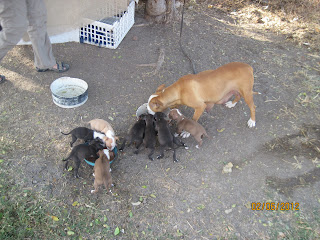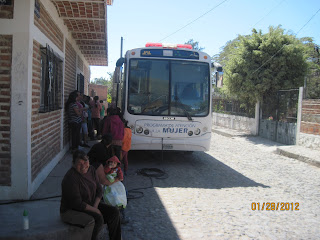Buses are a very reliable mode of transportation in Mexico. You can go just about anywhere for a small amount of money. In fact, we lived here for the first 10 months without a car. We took buses and taxis. If you are on a tight budget, you can probably save $200 U. S. per month. Local bus service stops around 10:00 p.m. and the taxis around midnight. These times can vary from city to city. But, make sure you know when these services stop. Sometimes you can find a taxi company that operates 24 hours per day.
Third class buses are the city buses. They typically charge 60 cents to go from San Nicolas to Chapala and another 60 cents to go to Ajijic. This is about a one hour ride from San Nicolas to Ajijic. These buses take about twice as long to travel the same distance by car. So, you need to be patient. Also, take an umbrella during the rainy season. You will be standing in the aisle periodically, because they pack the people in like sardines. Avoid sitting in the back of the bus because of the rough ride.
Second class buses offer more comfort than city buses. There is a huge difference in seats. Sometimes the city bus seats are hard plastic or metal. Second class seats are all cushions. The second class bus ticket from Chapala to Guadalajara is 4 dollars one way and takes one hour. Second class buses also travel long distances. There are no toilets usually, and if there are, they don't work. There is not much difference in cost between first and second class, so I always recommend first class. Especially for us older people!
First class buses are the way to go if you are traveling for several hours or more. A first class bus from Guadalajara to Puerto Vallarta is about a five hour ride and the cost one way is 15 dollars. The bus will have toilets that work and an ample amount of leg room. As a rule of thumb, it should cost you 3 to 4 dollars an hour to ride a first class bus. First class buses stop far less often than second class. Express service is offered more often when you travel first class. These drivers run on strict schedules, so they will not wait for you. Also, I have never had a problem with lost or stolen luggage.
 |
| Third class bus stop in San Nicolas. This is a several minute walk from our home. |
|
 |
| Third class (city bus) |
|
 |
| The only seats left for these kids on this third class bus were up front. I'm sure the bus company's liability insurance is paid in full! |
 |
| Second class bus. |
|
 |
| Second class bus from Chapala to Guadalajara. |
 |
| Chapala bus station |
 |
| First class bus. There have been no chickens riding on the top of this rig. These buses have mostly Mexicans as passengers. It's funny because they show English speaking movies with Spanish subtitles. |
 |
| More first class buses transporting athletes from the Pan Am games. Many of these buses are Mercedes Benz and Volvo. |


























































